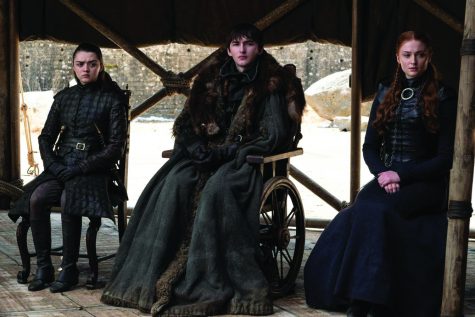Fans worldwide are done watching the Throne
May 28, 2019

After eight seasons of must-see television, HBO’s Game of Thrones (GoT) has finished its run. Like all good things, the ups and downs, highs and lows, and twists and turns have to end. Despite its divisive final season, GoT will go down as a show for the ages and perhaps the best of all time.
GoT has always been a show of subverting expectations. In season one, we follow the bold and noble Ned Stark, played by the always captivating Sean Bean. Surely this is the man we follow throughout the seasons to come, the lone sane man in a world of chaos; but no, GoT says, as we lose Ned in the eighth episode of the first season. Well now his son Rob Stark, will be the one to guide us…oh he’s dead to? Cool. Much in the same way, GoT subverts our expectations, by turning Daenerys Targaryen from savior to mad queen.
George R.R. Martin has sought to subvert the hero tropes in literature from the very beginning. In Westeros, the noble and good often meet gruesome and undeserved ends, while the vile and malcontent thrive. But Martin strives to show us that these judgements are just based on our point of view. No character believes they are evil, instead they are the hero of their own story as it where, and thus Dany believes burning down King’s Landing is a necessary evil. It is the first time that we as an audience need to question the person, we thought we knew, and who we had rooted for to take the Iron Throne.
Unfortunately for the Mother of Dragons, but perhaps fortunate for the people of Westeros, she never so much as sits on the Iron Throne due to her assassination at the hands of her lover, and nephew (gross), Jon Snow. For most viewers it was a forgone conclusion that either Jon or Dany would sit on the Throne, even if it meant battling it out with whoever survived the dust up claiming the Throne. It was not meant to be for either character as Jon never wanted it and Dany seemingly wanted it too much. No, instead the Throne went to Bran the Broken, the Three Eyed Raven, whose mind is home to the collective history of Westeros.
The show ties itself up neatly. The surviving Stark children going on to lead Westeros into the future, and Jon living for the rest of his days beyond the wall. Many a fan favorite characters have positions of high authority in this new world order, and all is right in the realm. This more than anything is what has agitated some of the more fervent of GoT’s fanbase. The feeling that things were tied up too neatly has been lobbied against the show, but in truth it’s a double-edged sword. It failed to show the outcomes for beloved characters and claims of a plot hole begin. Showing the fate of all these characters and claims of fan service arise.
More and more there seems to be a vocal minority both on and offline who believe with enough vitriol and hate, they can change pop culture to better serve their inclinations. That is why over a million “fans” have signed a petition to have the final season rewritten. Tyrion Lannister, another fan favorite, may have put it best in the final episode. “It’s not up to you.” Ultimately the responsibility of an audience begins and ends with viewing the art. By allowing the audience to dictate where the art is heading, limits the art in the future. Only by allowing the artist the freedom to express themselves without the fear of mob justice can art continue to flourish.
While the petulant among us may think themselves the hero for fighting for a “better” ending, in truth they are the villains they claim to defy. It is said that in a show as momentous as GoT, its end is so tarnished by its audience. Instead of vilifying how the show ended, let us celebrate it for the joy it brought over these past eight seasons. Always remember this: What do we say to our angry inner fanboy? Not today.






